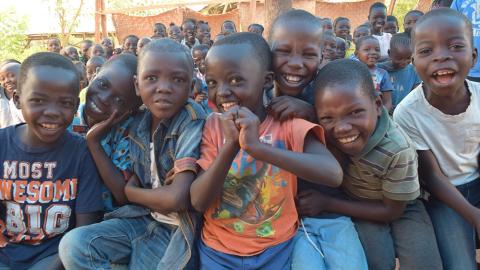
About Us
About us
Internal conflict and prolonged political instability have destabilized and weakened the already fragile economic conditions for families in the Democratic Republic of Congo, where 60 per cent of the population lives on less than $1 per day. Vulnerable families are also affected by frequent natural disasters, such as flooding and epidemics.
Our teams have been working in the DRC since 1984. Today, we are working to contribute to the measurable and sustainable improvement of well-being for 5,311,208 children and their communities through transformational development and humanitarian relief programmes focused on: health and nutrition, education, water and sanitation, protecting children, livelihoods and resilience, food aid, psychosocial support and the reintegration if displaced people.
Our History
Our teams have been working in the Democratic Republic of Congo since 1984, when our operations began by partnering with USAID and local churches to distribute food to families in need.
In 1998, our operations transitioned from primarily relief-focused to sustainable transformational development activities. Today, we are working towards the measurable, sustainable well-being of 5,311,208 children and their communities.
Recent achievements
Over the past five years, our teams have had a sustained and concerted presence in 13 of the 26 provinces of the country. Between 2013 and 2015, our relief and development programmes directly impacted the lives of 4.7 million children, while advocacy efforts at the national level led to a new child protection law, allowing us to indirectly touch the lives of millions more.
In 2018, our teams reached 1,119,628 children (609,565 boys and 590,063 girls) through our programmes.
The following information highlights the improvements we have been making in well-being for children in the Democratic Republic of Congo.
In the health, nutrition and Water, Sanitation and Hygiene (WASH) sectors:
-More children are protected from disease thanks to improved access to vaccines and long-lasting insecticide-treated nets.
-The percentage of households with access to at least 15 litres of clean water per day per person increased from 26% in 2015 to 63.3% in 2017.
In education:
-More children are completing at least six years of basic education (up from 47.8% in 2013 to 81.1% in 2015.
In terms of livelihoods:
-We have seen an increase in the proportion of households with an increased and/or stead source of income.
Recent emergencies achievements:
It was estimated that 13.1 million Congolese require humanitarian assistance and protection as a result of heightened violence in a number of hotspots across the country and the precarious food security situation. In 2018, 758,556 people received humanitarian assistance from as a result of an emergency/disaster programmes, in all four burning corners of the country: North Ubangui, the Kivus, Tanganyika and the Kasais.